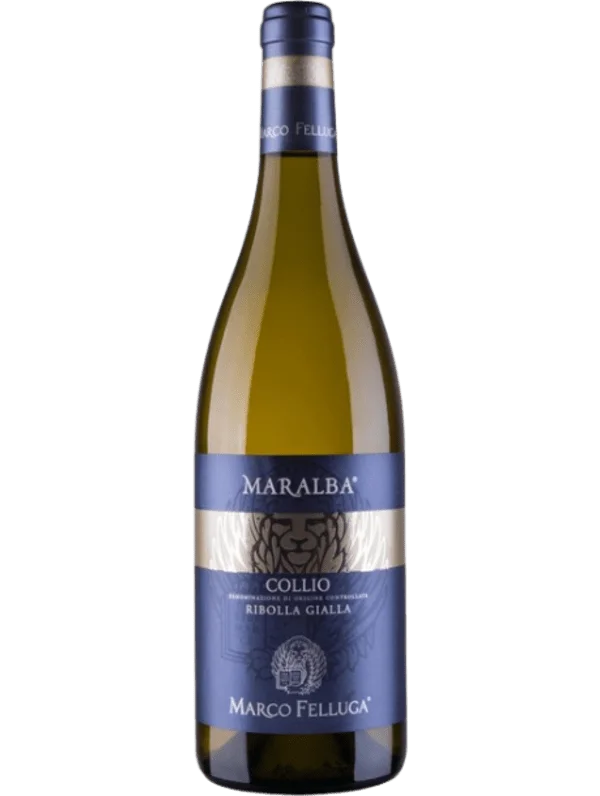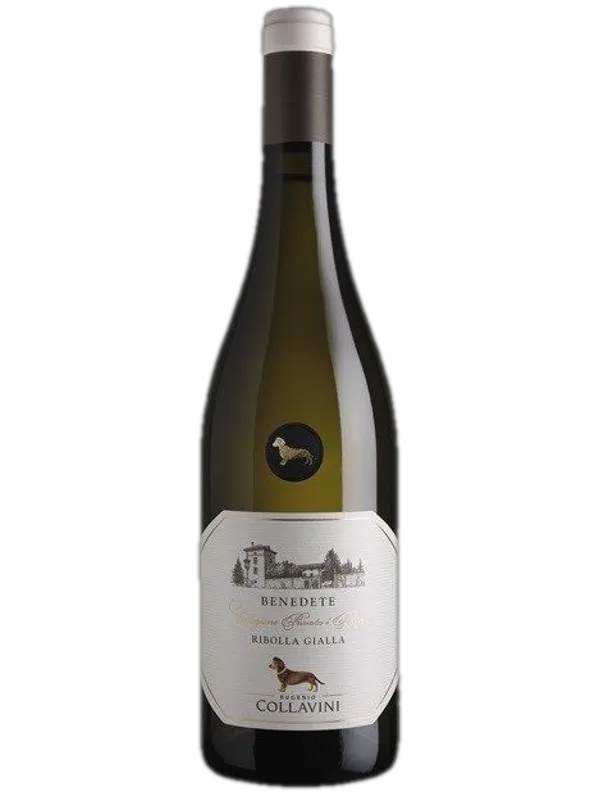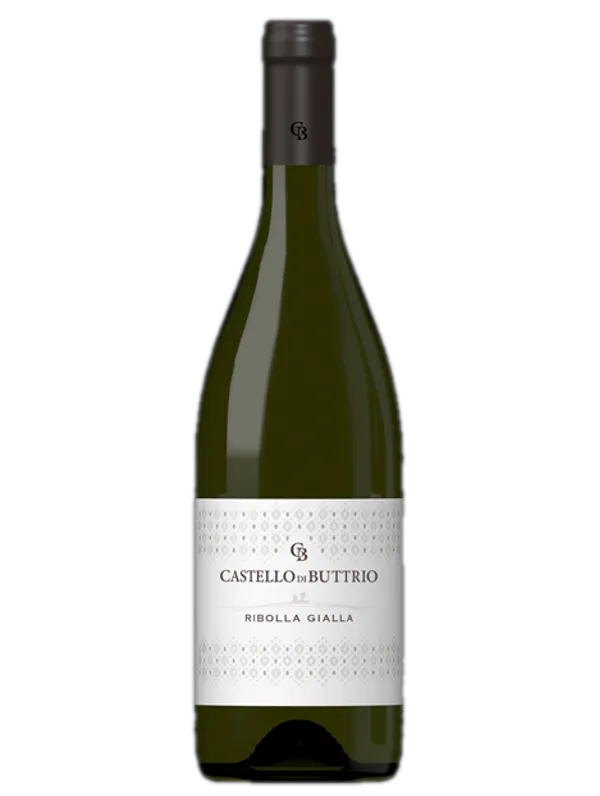Ribolla Gialla, a versatile white grape from Italy's Friuli-Venezia Giulia region, is gaining recognition not only for its refreshing, mineral-driven white wines but also as a key grape in the production of Orange wines. Known for its citrus notes and crisp acidity, Ribolla Gialla offers a tantalizing alternative to more mainstream whites. Discover the multifaceted allure of Ribolla Gialla.
Primary Flavors
Green Apple
Lemon
Almond
Jasmine
Pear
Grape Profile
TANNIN: Quite Soft, Barely Noticeable Tannins
ACIDITY: High Acidity, Tangy and Crisp
BODY: Light to Medium, Versatile
SUGAR: Slightly Dry with a Hint of Sweetness
LEVEL OF ALCOHOL: Fairly Strong (12-14%)
Handling
Serve 6-10°C
Decant No
Glass Type Standard White Wine Glass
Period open3-5 days
Cellar Up to 5 Years
Our Top selection

Collio Ribolla Gialla Maralba
Straw-yellow, this Ribolla Gialla offers a fresh bouquet with floral and fruity notes of exotic fruit, grapefruit, and apple. Elegant and intense, it's a vibrant choice for wine lovers.
Read more

Collavini 'Benedete', Ribolla Gialla, Venezia Giulia
Bright white wine with wet stone, peach, bitter lemon notes, spicy, creamy, and a saline finish.
Read more

Castello di Buttrio, Friuli Colli Orientali, Ribolla Gialla
Elegant and crisp, showing vibrant citrus and minerality, a refreshing white from Friuli Venezia Giulia.
Read more
Ribolla Gialla Regions
Food Parings

Starter: Caprese Salad
A classic Italian appetizer featuring fresh mozzarella cheese, vine-ripened tomatoes, and aromatic basil leaves, all drizzled with high-quality olive oil.

Main course: Grilled Sea Bass
Sea bass fillets grilled to perfection, seasoned with a medley of fresh herbs like thyme and rosemary, accompanied by a tangy lemon-butter sauce.

Second course: Chicken Piccata
Tender chicken breasts sautéed in a rich, velvety sauce made from lemon juice, capers, and white wine, best enjoyed with a side of steamed asparagus.

Dessert: Lemon Sorbet
A zesty and refreshing end to your meal, featuring freshly squeezed lemon juice and just the right amount of sweetness to cleanse your palate.
Ribolla Gialla's high acidity and light body make it a fantastic partner for a variety of foods. Its green apple and lemon notes pair seamlessly with fresh seafood, while its subtle almond and floral qualities complement lighter meat dishes. The grape's crisp acidity also cuts through creamier sauces, making it a flexible choice for diverse cuisines. From Italian antipasti to Asian stir-fries, Ribolla Gialla's palate-cleansing qualities elevate any meal.
FAQS
What kind of wine is Ribolla Gialla?
Ribolla Gialla is a white wine grape variety that produces wines known for their high acidity, light body, and fruit-forward profile. They can be both single-varietal wines or part of blends.
What does Ribolla Gialla taste like?
Ribolla Gialla wines are usually crisp with flavors of green apple, lemon peel, and almond. They often have mineral and floral notes, which can include jasmine.
Is Ribolla Gialla dry or sweet?
Ribolla Gialla wines are typically dry, with a focus on their high acidity and fruitiness rather than sweetness.
Where is Ribolla Gialla produced?
The grape is primarily grown in the Friuli-Venezia Giulia region in Northeastern Italy. Some cultivation also occurs in parts of the Veneto region.
What should I eat with Ribolla Gialla?
Ribolla Gialla pairs exceptionally well with a variety of foods. Its high acidity makes it great with seafood, and it also complements lighter meat dishes. Italian antipasti, Japanese sushi, and Mediterranean salads are just a few of the many dishes that go well with this wine.
How is Ribolla Gialla different from other Italian white wines like Pinot Grigio or Prosecco?
Ribolla Gialla is unique in its flavor profile and handling when compared to other Italian white wines like Pinot Grigio and Prosecco. While Pinot Grigio is also a light-bodied white wine, it typically leans more towards pear and apple flavors and is less acidic. Prosecco, on the other hand, is a sparkling wine made primarily from the Glera grape, offering a bubbly, fruity, and floral experience.
Ribolla Gialla tends to have higher acidity and a distinct combination of green apple, lemon peel, and mineral notes. Its higher acidity makes it especially versatile for food pairings. Unlike Prosecco, it's mostly still and less commonly found in sparkling versions.
What's the best way to store Ribolla Gialla?
For a bottle of Ribolla Gialla that's been opened, re-cork it or use a wine stopper and store it in the refrigerator. It's generally best enjoyed within 3-5 days. For unopened bottles, store them in a cool, dark place, ideally in a wine cellar if you have one. The ideal temperature for storing white wine is between 45–55°F (7–13°C). Ribolla Gialla is best enjoyed young for its freshness, so consider consuming it within up to 5 years of its vintage date.
Want to know it all?
Ribolla Gialla's Primary Flavours
Ribolla Gialla is a white grape variety that offers a fascinating bouquet of flavours, perfect for those seeking something beyond the usual Sauvignon Blanc or Pinot Grigio. When sipped, expect to be greeted by vibrant notes of green apple, pear, and Jasmine, akin to a fragrant English garden in bloom. These primary flavours are often accompanied by a hint of almond, giving the wine a complexity that can elevate a simple fish and chips meal or complement a British cheese board. With its high acidity and crisp finish, Ribolla Gialla can be a refreshing change for anyone accustomed to the more ubiquitous white wines.
Green Apple
Lemon
Almond
Jasmine
History of Ribolla Gialla
The history of Ribolla Gialla can be traced back to medieval times in the Friuli-Venezia Giulia region. It is one of the oldest grape varieties cultivated in this region and was even mentioned in 14th-century documents. Despite facing phylloxera infestations and world wars that led to a decrease in its cultivation, Ribolla Gialla has seen a resurgence in recent decades. Modern winemakers have embraced this ancient grape, focusing on organic and biodynamic practices to elevate its unique profile.
Consumer Info
Ribolla Gialla wines are often moderately priced, ranging from £15 to £30 per bottle, offering a cost-effective way to explore Italian whites. When it comes to food pairing, the grape shows a particularly strong affinity with Italian, Japanese, and Mediterranean cuisines.
Top 3 Cuisines that Pair Well with Ribolla GiallaItalian
The wine's high acidity and fruit-forward notes complement Italian staples like pasta and antipasti.
Japanese
Sushi and sashimi benefit from Ribolla Gialla's citrusy, palate-cleansing qualities.
Mediterranean
The wine pairs well with olive oil-based dishes, grilled fish, and fresh salads common in Mediterranean diets.
Handling of Ribolla Gialla
When it comes to savouring Ribolla Gialla at its best, a few guidelines can enhance your experience. First, aim for a serving temperature between 6-10°C, not dissimilar to how you'd serve a British ale, to allow the wine's nuanced flavours to shine.
A standard white wine glass will do the trick, giving enough room for the wine to breathe but not so much that it loses its character.
Given that Ribolla Gialla is generally a young, fresh white wine, decanting is usually not required. If you have an older vintage, a brief swirl in the glass should suffice.
If you don't finish the bottle in one go—perhaps after a hearty Sunday roast—you'll find it keeps well for up to 3-5 days when re-corked and stored in the fridge.
As for cellaring, Ribolla Gialla generally isn't a long-ager; it's best enjoyed within 3-5 years to capture its youthful exuberance.
Serving temperature:
8-10°CGlass type:
standard white wine glassSuggested time in Decanter:
Not NeededLasting period once open:
3-5 daysStoring time in cellar:
Up to 5 Years


